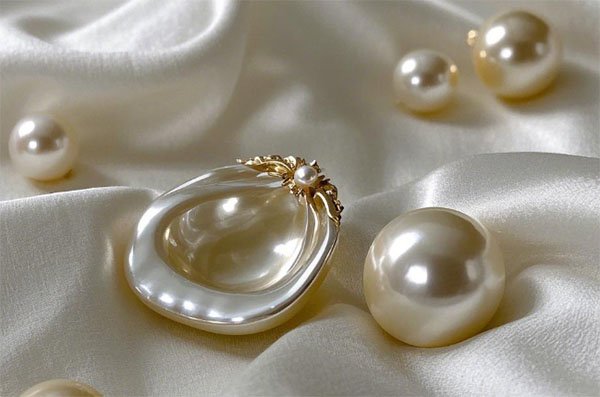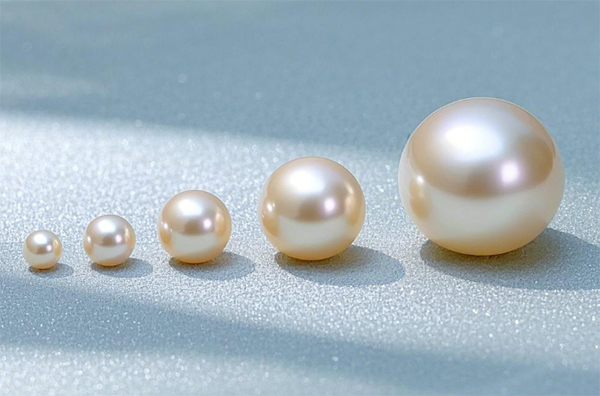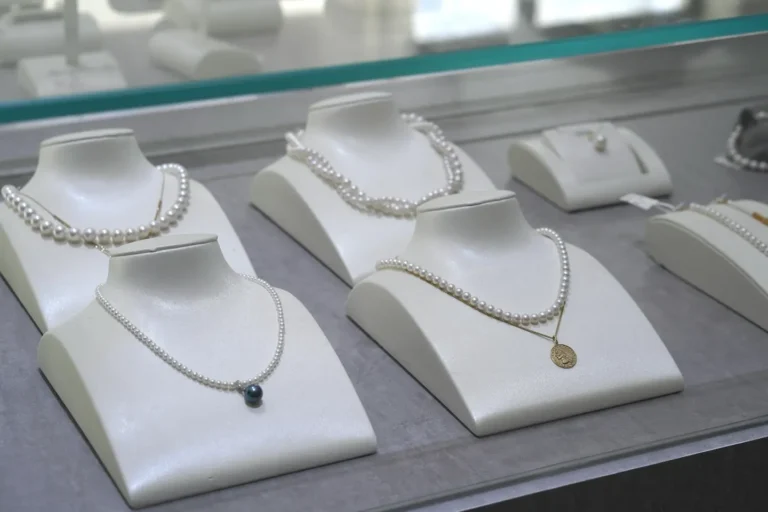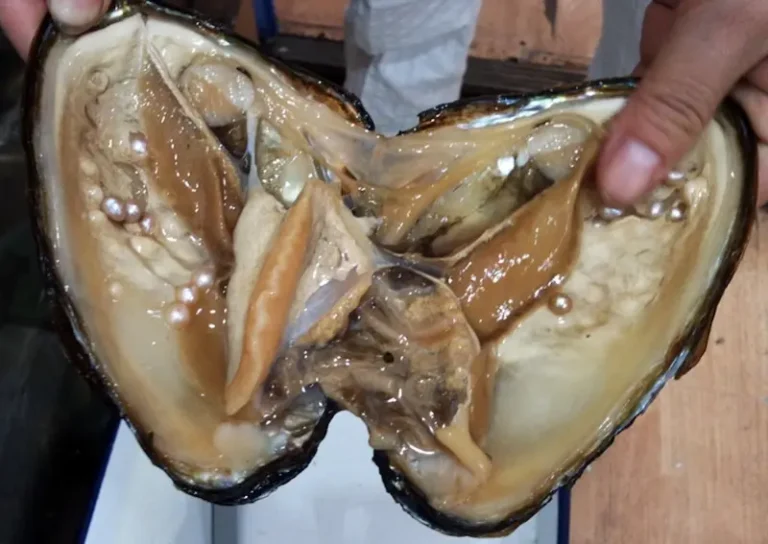If you are preparing to select wholesale pearls for jewelry making, then you may need to know how to identify the quality of freshwater pearls.
How to identify the quality of freshwater pearls? Next, I will share how to identify high-quality pearls from 6 dimensions and grade the quality of pearls.

6 dimensions for identifying wholesale pearls for jewelry making
How to identify the quality of freshwater pearls? Generally speaking, there are several dimensions to identify pearls: color, size, shape, luster, finish and matching (for multi-pearl jewelry).
| Grading Dimension | Description | Grading Criteria | Specific Details |
| Color | Freshwater pearls come in a wide variety of colors. Those with bright, intense and uniform colors are of better quality, and pink and golden pearls are of higher value. | Superior Color: Common Color: Inferior Color: | Superior Color: Intense pink, golden. Common Color: White, light pink, light purple, light yellow, etc., which are common and relatively ordinary. Inferior Color: Dull colors, such as grayish, dark yellowish, or mottled ones that look unattractive overall. |
| Size | Under the same quality conditions, the larger the pearl, the higher its value. | Tiny Beads: < Smaller than 5mm Small Beads: 5 – 6mm Medium Beads: 6.5 – 8.5mm Large Beads: 8.5 – 11mm Extra-large Beads: ≥ 12mm | – |
| Shape | Judged by the percentage difference in diameters. The rounder the pearl, the rarer and more precious it is. | Round: Diameter difference percentage ≤ 3.0% Near-round: Diameter difference percentage ≤ 8.0% Oval: Short oval diameter difference percentage ≤ 20.0%, Long oval diameter difference percentage > 20.0% Flat-round: High type (diameter difference percentage ≤ 20.0%), Low type (diameter difference percentage > 20.0%) Irregular: Shape is irregular with no obvious symmetry. | – |
| Luster | The stronger the luster, the higher the quality and value of the pearl. | Exceptionally Strong: Strong: Moderate: Weak: | Exceptionally Strong: The reflected light is extremely bright, sharp and uniform, like a mirror, with a very clear image on the surface. Strong: The reflected light is bright, sharp and uniform, with a clear image. Moderate: The reflected light is bright enough to see the object image on the surface. Weak: The reflected light is relatively weak, and the object image is blurred. |
| Surface Quality | The fewer the flaws on the pearl surface, the better the quality. | Flawless: Minimally Flawed: Slightly Flawed: Flawed: | Flawless: No flaws can be seen with the naked eye. Minimally Flawed: Extremely slight flaws can only be found upon careful inspection. Slightly Flawed: A few relatively small flaws can be seen with the naked eye, but they don’t affect the overall appearance. Flawed: The flaws are obvious and affect the appearance. |
| Matching (for multi-pearl jewelry) | The higher the matching degree of pearls in terms of color, size, shape and luster, the higher the overall quality of the jewelry. | Excellent: Good: Fair: Poor: | Excellent: All indicators are highly consistent. Good: All indicators are relatively close, with slight differences that don’t affect the overall effect. Fair: There are some differences, but they are still acceptable. Poor: The differences in all indicators are obvious and affect the beauty and coordination of the jewelry. |
Recommended Quality Pearl Suppliers
How to wholesale high-quality pearls? Recommended by high-quality pearl farming and processing companies: Xinye Pearl.
Xinye Pearl is a well-known high-quality freshwater pearl wholesale manufacturer. It has its own pearl cultivation farm and has leading pearl jewelry processing technology. Its pearl jewelry wholesale price is favorable and of good quality. It is one of the best freshwater pearl suppliers. Cooperating with Xinye Pearl can help you achieve career success.
Contact information: https://www.pearlswholesaler.com/contact/
Detailed description of pearl identification methods
Luster
Observation method: Place the pearl under soft light and observe the light reflection on the pearl surface. The higher the gloss, the better the quality. Generally speaking, the surface of pearls with extremely strong luster is crystal clear and iridescent, and can reflect objects; the surface of pearls with medium luster can partially reflect objects; the surface of pearls with weak luster is relatively dim.
Methods for batch observation of pearl luster:
1) Lighting environment: The ambient light is sufficient and uniform, avoiding direct strong light or shadow interference.
2) Comparison with standard samples: Prepare pearl samples with known luster levels as reference.
3) Batch observation method: First, lay the pearls flat on a white background and quickly pick out the ones with obviously dim luster; group the remaining pearls according to the similarity of luster, about 10 pearls per group, and then compare them with the standard samples; take out the pearls whose luster is difficult to judge separately, and observe and rotate the pearls from different angles.
4) Recording and statistics: Record the number and proportion of pearls with different luster levels, and judge the quality of the whole batch of pearls through sampling survey method.

Shape
Identifying Wholesale Pearls for Jewelry Making: You can observe whether the pearls are round and regular with the naked eye through observation methods. Generally speaking, round pearls are the most precious, and the difference between the length and short diameter is less than 1%.
Methods for batch observation of pearl shape:
1) Prepare a flat white tray and caliper.
2) Pour the pearls on the white tray and pick out the obviously irregular pearls first.
3) Use a caliper to randomly select pearls to measure their diameters and calculate the percentage of diameter difference. Pearls with a diameter difference of ≤3.0% can be preliminarily judged as round pearls and picked out separately.
Other pearls continue to measure the percentage of diameter difference. Pearls with a diameter difference of ≤8.0% are round pearls, and pearls with a diameter difference of ≤12.0% are nearly round pearls. They are classified and placed separately. Short ellipse pearls with a diameter difference of ≤20.0% and long ellipse pearls with a diameter difference of >20.0% are elliptical pearls. Pearls with a diameter difference of ≤20.0% are high-shaped oblate pearls, and pearls with a diameter difference of >20.0% are low-shaped oblate pearls. They are classified separately.
4) Sampling inspection: Randomly select samples from each type of pearl shape and check them again. If a classification error is found, adjust it in time.
5) Count the number and proportion of pearls of various shapes to evaluate the overall quality of pearls.

Surface defects
Due to the influence of the growth environment, the surface of natural pearls will have more or less defects, but the fewer defects, the higher the quality of the pearls.
Methods for observing surface defects of pearls in batches:
1) Prepare a flat white tray, and the ambient light should be bright but not too glaring.
2) Pick out pearls with obvious scratches, large pits, and black spots.
3) Use a magnifying glass to observe the remaining pearls at close range, especially pay attention to pearls with subtle scratches, small pits, white spots, and textures.
4) Classification judgment
Flawless pearls: pearls with almost no flaws that can be seen with the naked eye.
Micro-defect pearls: pearls with extremely subtle flaws on the surface, which require careful observation to be discovered.
Minor defect pearls: a small number of minor flaws, but do not affect the overall beauty.
Defective pearls: the flaws are more obvious and affect the beauty.
5) Next, the pearls can be sampled, reviewed, counted, and evaluated, and the quality of this batch of pearls can be analyzed through sampling surveys.

Color
Freshwater pearls have rich and diverse colors. Generally speaking, pearls with uniform, bright, and bright colors are of better quality.
- First, pick out pearls with extremely uneven color distribution and obvious variegated colors.
- Roughly classified by common pearl colors.
White pearls: First-level white is a colorless pearl, and second-level white pearls are allowed to have slight yellow or light gray.
Pink pearls: Deep pink pearls are of high value; those with light or uneven colors are of lower quality.
Gold pearls: Dark gold pearls without color are the best; those with light colors are relatively less valuable.
Black pearls: Pure black pearls are of high quality; if there are brown and other color reflections, the quality is relatively low.
Check the accompanying colors: Pearls with rich accompanying colors and harmonious matching will increase the beauty.
Professional equipment:
Pearl color sorters can use optical sensors and image processing technology to quickly identify the size, color, and shape of pearls, and classify and screen pearls according to preset parameters.

Size
You can use a professional jewelry caliper to measure the diameter of pearls. If you are wholesale pearls in large quantities, you can consider using professional equipment such as vibrating screens.
Professional equipment: vibrating screen
The vibration generated by the vibrating motor causes smaller pearls to fall through the mesh of the screen, while larger pearls remain on the screen. This equipment is suitable for large-scale pearl screening operations.
Pearl layer thickness
Generally speaking, the thicker the pearl layer, the better the pearl’s luster and quality.
You can consider using the light transmission observation method. For example, use a flashlight to observe the light transmission inside the pearl from the side. If you can see a clearer internal structure and the light and shadow are uniform, it means that the pearl layer may be thicker.
For pearls with higher value, professional X-ray fluorescence spectrometers and optical coherence tomography scanners can be used for precise measurement. However, this kind of detection is more expensive.
Conclusion
Identifying Wholesale pearls for jewelry making: The above is a comprehensive identification guide for wholesale pearls for jewelry making in 6 dimensions. If you are preparing to engage in the wholesale business of pearl jewelry, then this article will be of great help to you. In addition, with the development of modern technology, more advanced jewelry screening equipment has appeared, which will further improve the accuracy of screening.






